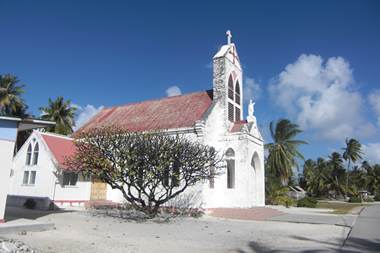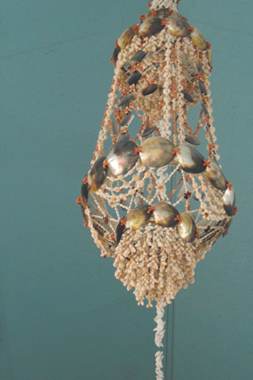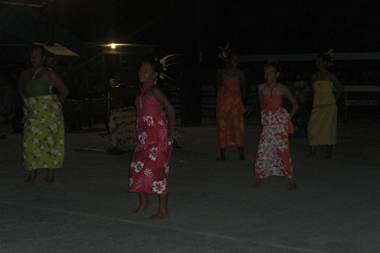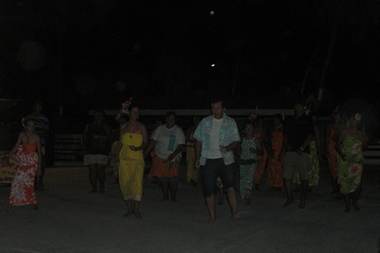Sunday 22nd July - Au Revoir Kauehi, Bonjour Fakarava

|
16:30.33S 145:27.41W Sunday 22nd July – Au Revoir Kauehi, Bonjour Fakarava Kauehi was a very charming interlude. About 200 people live here on the atoll. They are all very welcoming, they have a church (naturally it seats 200), a decent-looking school and medical centre, a small general store, concrete road running through the village centre, concrete basketball court which acts as the village square for all sorts of communal activities, 7 or 8 boules lanes in the hard sand adjacent to this, three restaurants adjacent to that (but we’re talking lean-to style constructions made of palm leaves etc housing a couple of tables and plastic chairs), a ‘shop’ displaying various necklaces and so on made out of a wide variety of shells. These are displayed hanging from offcuts of tree branches within the boundaries of the shop walls but the walls are only 3 feet high, there is no door to the shop that could be closed (or to many of the other properties on the island) and the goods remain on open display and completely unsecured day and night. It is unlikely that anyone here would comprehend the need for any greater protection of an individual’s property.
The Church – looking south
Interior of the church – note chandeliers
A closer look at those seashell chandeliers It goes without saying that everyone knows everyone else. How could it be otherwise given the population? Many will grasp your (stranger’s) hand and shake it and every child will offer an enthusiastic and sunny “Bonjour Monsieur/Madam”. Practically nothing grows here except coconut palms and, here and there, a bit of grass and bougainvillea. So, fish and coconuts are the staples of the diet. Pretty well everything else has to be imported. We’ve seen one pig on the island (apparently the prize for a boules competition which we saw in progress) and one guesses that there may be plans for its future of which it is blissfully unaware. We’ve seen no other animals at all (not even chickens) apart from quite a few dogs. And, apparently, woking the dog . . . . no; on second thoughts, let’s move on. Too much information.
Looking towards the village centre from the jetty end So, usual question; how does a population of 200 souls
support itself here? Many of the
young adults, one gathers, leg it to the cities. Thinking about it, there would appear to
be something of a shortage of men and women in their twenties and thirties
around the place. But, we haven’t
conducted any sort of scientific census and that impression could be wholly
inaccurate. The black pearl
industry used to be an important part of the economy of many of these atolls but
apparently that is no longer the case.
The bottom has fallen out of the market as far as these people are
concerned. Otherwise there is
copra. This appears to be produced
on a small scale by individuals and their families who plant and tend the trees,
harvest the coconuts and dry them out in fire pits dug in the sand. There is a communal warehouse in which
the copra is stored and from which it is collected at intervals by a visiting
ship. We gather that the copra
harvest is heavily subsidised by Whilst we were there we witnessed in the centre of the village (either on or adjacent to the basketball court) on successive evenings the local boules championship and a Polynesian team dancing competition – all of which was huge fun and attended by pretty well everyone in the village. During the dance evening, a French yottie – Jerome Fitoussi - led them all in a bit of follow-my-leader and it was clear that for many this was the highlight of the evening’s entertainment. Jerome and his family have been coming here for about 10 years and appear to become absorbed almost seamlessly into the fabric of the village whenever they visit, which they do for weeks at a time. The photos below are clearly much too dark but I’m afraid all we have is the modern digital equivalent of a Brownie box camera. (Dep Ed – hint for Christmas present?!) So, that’s as good as it gets, I’m afraid.
One of the dancing teams
Jerome leading the dance Having been in Kauehi for almost 4 days by this morning it was time to be on the move again to enable us to see a little more of the Tuomotos but get to Rangiroa (still Tuomotos but some distance NW of us now) to meet James and Mira on 1st August. We departed at around 0700 today for Fakarava which is the second largest atoll in the Tuomotos and lies about 40NM SW of Kauehi. It is rectangular shaped, about 30NM long and 10NM wide, oriented NW-SE. It has two entrances – one on its SE side and one on its NW side and once inside the lagoon you can sail the 30NM or so between the two entrances, anchoring on the way if you wish. Since our journey will take us NW for a bit now, the plan is to start at the SE entrance of Fakarava and call in as we please whilst we make our way to the NW entrance. From there we’ll sail NW about 60NM to Apataki and explore that 18x15 NM atoll. From there it’s about 80NM to the entrance to Rangiroa. These inter-atoll sails are something of a
puzzle. Ideally you’d
like to hit each entrance at precisely the time of slack water and in
daylight. We kinda know when
daylight is but establishing the times of slack water for some atoll some way
away is quite another issue. I
quote from one pilot – but this advice is not necessarily replicated elsewhere
and it applies to one pass on one island – “In the Pakaka Pass the current
changes direction one and a half hours after HW and 3 hours after LW”. In the absence of that guidance for that
particular pass what guesses would you have made? I’d have guessed a change in direction
at pretty much HW and LW.
The next bit of the puzzle is working out quite how badly you can afford to get your transit times wrong and get away with it. It isn’t feasible to hit each entrance at the ideal time unless you intend to spend around 24 hours doing every inter-atoll journey. Not surprisingly some entrances are more forgiving than others and that has to be added to the mix. Having left when we did this morning (an hour after dawn – and we do need good daylight), we exited Kauehi an hour and a quarter later. That was about 2 hours after HW and around 4 hours before LW. In theory that should have meant that we were about an hour off hitting peak flow. The outgoing current was certainly shifting – it was already doing around 4 knots. Fortunately there was practically no wind. As a result, the overfalls at the entrance were too small to merit the name even though we are dealing with spring tides. But, we’d guessed that that would be the case last night. We arrived at the SW entrance to Fakarava at around 1400 – a good hour and a half after LW and by that time the incoming stream was fairly well established – around 2 knots and building. It’s a slightly worrying entrance for the first timer because you will sail over a dark coral patch that seems to block the entrance. It does not in fact but it will reduce the score on your echo-sounder doors to around a metre and a half below the keel (well, if like us you draw 2.4m) provided that you are on the right track and staying there despite what the current is trying to do to you. A metre and a half? That’s loads! Yeah; you’re right. Next time it’ll feel more like loads. Anyway, we’re now anchored at the southern end of Fakarava, off the ancient capital of the atoll. The current capital is at the northern end and we’ll get there anon. Anchoring was reasonably straightforward notwithstanding the fact that we had to have two goes at it to get the anchor decently buried in a sandy patch. Our first attempt merely hitched the anchor round a big piece of coral and that wasn’t apparent until we snorkelled it.
|






